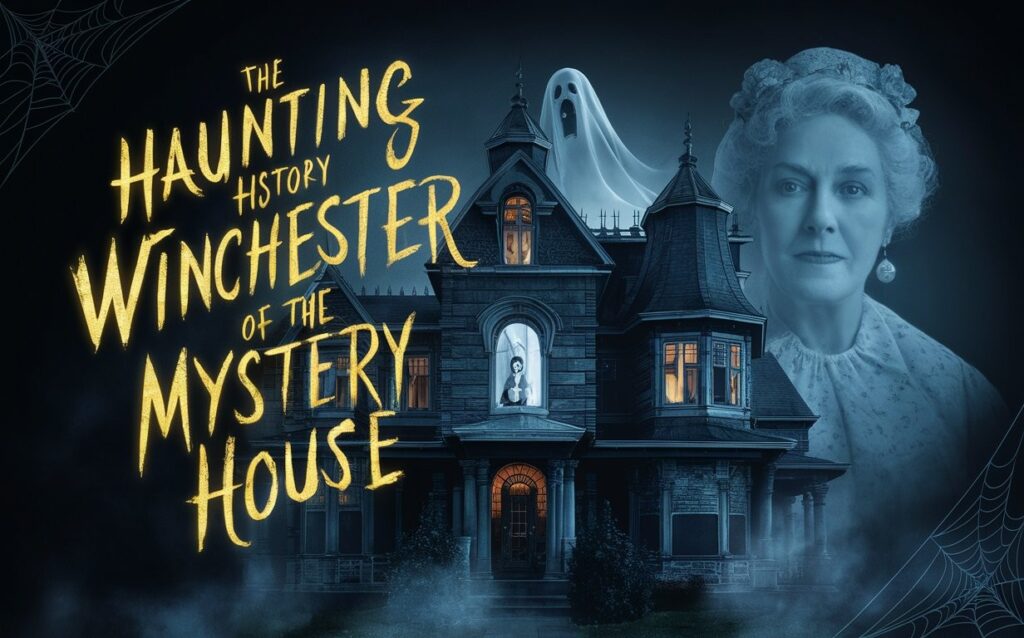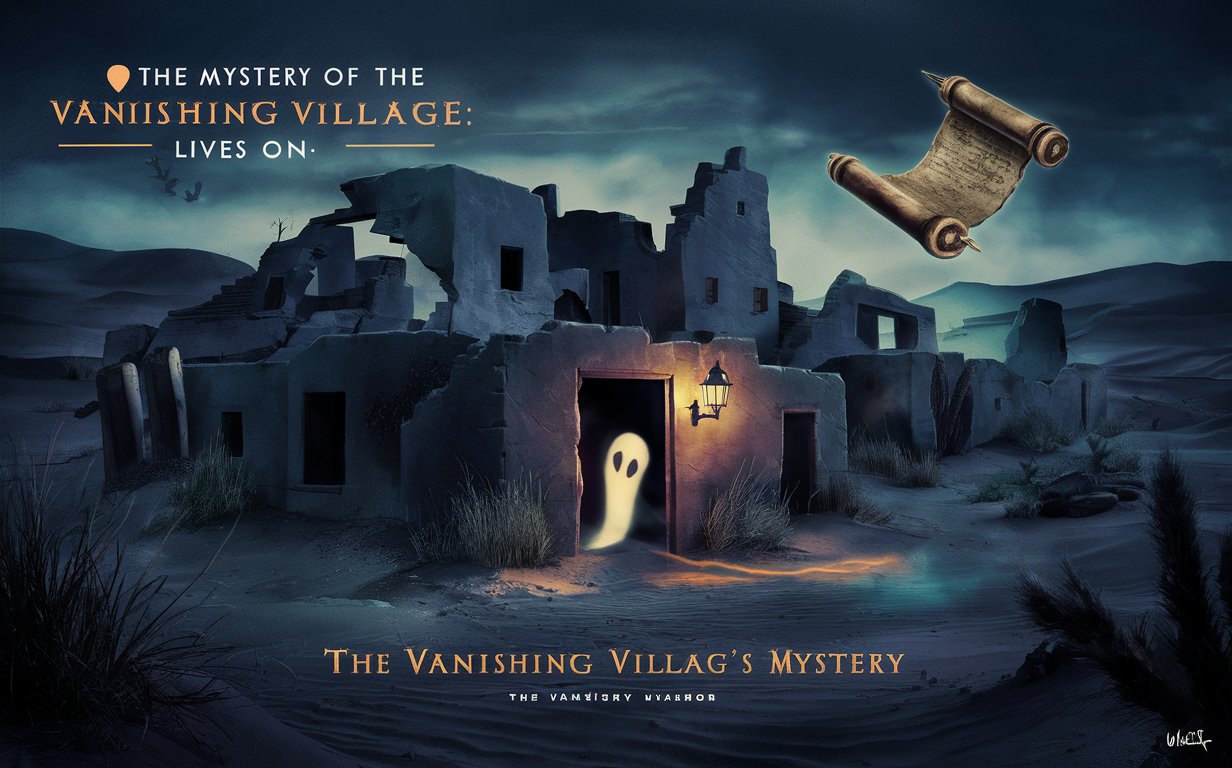The Haunting History of the Winchester Mystery House

Nestled in the rolling hills of San Jose, California, the Winchester Mystery House stands as one of the most famous—and eerie—landmarks in the United States. This sprawling, labyrinthine mansion, often described as a place where architecture, myth, and mystery intertwine, has long been the subject of fascination and speculation. With its maze-like corridors, staircases that lead to nowhere, and doors that open into walls, the Winchester Mystery House has earned its reputation as one of the most haunted locations in the world.
But beyond the chilling rumors of restless spirits and strange occurrences, the house’s history is equally as captivating—one marked by a grieving widow, a fortune built on death, and a design that defies logic and reason. In this article, we’ll explore the origins of the Winchester Mystery House, the life of its enigmatic owner, Sarah Winchester, and the eerie mysteries that continue to surround this architectural oddity.
The Life of Sarah Winchester: A Legacy of Tragedy
The story of the Winchester Mystery House begins with Sarah L. Winchester, born in 1839 in New Haven, Connecticut. Sarah was a woman who, at a young age, was accustomed to wealth and privilege, but her life would take a dramatic and tragic turn that would eventually lead her to California.
The Deaths of Sarah’s Husband and Daughter
In 1862, Sarah married William Wirt Winchester, the heir to the Winchester Repeating Arms Company, known for producing the famous Winchester rifle. The company, founded by William’s father, Oliver Winchester, was a major force in the American industrial landscape, and it became immensely profitable during the American Civil War, which drove demand for the company’s repeating firearms. This wealth would play a significant role in Sarah’s life—though not in the way one might expect.
In 1866, just four years after Sarah’s marriage, tragedy struck. Her only daughter, Annie, died of a rare illness at the tender age of 11. Sarah was devastated, and the loss of her child weighed heavily on her. But even more tragedy was to follow.
In 1881, Sarah’s husband, William, died of tuberculosis, leaving her a widow. By this time, Sarah was a very wealthy woman, inheriting a fortune from both her husband and the Winchester company. However, despite the riches, she was consumed by grief. It was this combination of wealth, personal loss, and an eerie belief in the supernatural that would drive Sarah to begin her famously eccentric project: the construction of the Winchester Mystery House.
The Birth of the Winchester Mystery House: A House Built by Ghosts?
It is widely believed that, in the wake of her husband’s and daughter’s deaths, Sarah Winchester consulted a medium in Boston, who told her that the spirits of those killed by the Winchester rifle were angry and seeking vengeance. According to the medium, the only way to appease these restless spirits was to build a house that would serve as a sanctuary for them—a place where they could roam freely and never stop constructing. The medium supposedly advised Sarah to move west to California and build a house that would never be completed.
Whether Sarah truly believed in the medium’s words or whether the idea of constant construction was a way to cope with her grief is still a subject of debate, but what is clear is that she did indeed begin an unprecedented building project that would last for 38 years.
The Architecture of the Impossible: A Maze of Mystery
Construction on the Winchester Mystery House began in 1884, when Sarah purchased an unfinished farmhouse in San Jose. Over the next several decades, Sarah oversaw the building of the mansion, working with an ever-changing team of builders and carpenters. The house grew at a pace that defied reason—taking on a haphazard, erratic design that still baffles architects and historians to this day.
A House of Oddities
The mansion is a sprawling estate, covering six acres with 24,000 square feet of floor space. It includes 160 rooms, 47 fireplaces, 17 chimneys, 10,000 windows, and two basements. What sets the house apart, however, are the countless peculiarities built into the structure. These include:
- Staircases that lead to nowhere: Some staircases abruptly stop in mid-air, while others lead to blank walls or ceilings. The most famous example is the staircase that rises to a door leading to a skylight. These architectural oddities were said to be built to confuse and appease the spirits.
- Doors that open into walls: The mansion is filled with doors that open into nothing—literally. Some open to sheer drop-offs, while others reveal only solid walls. This gave rise to the idea that Sarah intentionally designed the house to confuse and disorient the spirits that were believed to haunt her.
- Windows in the floors and ceilings: There are also strange features like windows set into the floor or ceiling, as if to allow spirits to peer through the house or enter from any direction.
- A continuous construction process: No room in the house is identical, and no plan or blueprint was ever followed. The work on the house was said to be carried out every single day, with no breaks, except on the rare occasions when Sarah herself took a respite.
The house’s eccentric design has often been attributed to Sarah’s mental state, as she was reportedly deeply affected by the tragedies in her life. The notion that the house was built under the guidance of the spirits is a popular part of the lore, though some believe Sarah Winchester’s obsessive design process was driven by her grief, guilt, and perhaps even a psychological breakdown.
The Hauntings: Spirits and Supernatural Activity
The most enduring and chilling part of the Winchester Mystery House’s legend is the claim that it is haunted. Over the years, visitors and workers have reported strange occurrences, and the house has been the subject of numerous ghost stories. Some of the most commonly reported paranormal activities include:
- The sounds of footsteps: Workers and visitors alike have heard the sound of footsteps echoing through the mansion, though no one is present. Some claim to have heard these footsteps coming from rooms that are locked or abandoned.
- Doors opening and closing by themselves: Several reports suggest that doors open and shut on their own, as if moved by invisible hands. Many of these doors are in areas that are rarely accessed, such as the upper floors or attic.
- Ghostly apparitions: There have been sightings of ghostly figures, particularly the ghost of Sarah Winchester herself, walking the hallways. She is said to appear wearing black, either pacing or looking out the windows as if still overseeing her work.
- Spiritual manifestations: Paranormal investigators have conducted numerous ghost hunts in the mansion, with some capturing strange lights or unexplained sounds on their equipment. The house’s labyrinthine design and eerie atmosphere certainly contribute to the feeling that the spirits of the past still inhabit its walls.
The Legacy of the Winchester Mystery House
Sarah Winchester died in 1922 at the age of 83, but the legacy of the Winchester Mystery House endures. After her death, the mansion remained unfinished, with many sections of the house still in a state of construction. In the years that followed, the mansion passed through various owners, and parts of it were opened to the public.
Today, the Winchester Mystery House stands as a popular tourist attraction, drawing visitors from around the world who are eager to explore its bizarre architecture and hear its ghostly legends. The house has been the subject of documentaries, books, and even films, and it continues to fascinate those interested in the supernatural, the unexplained, and the mysteries of history.
The mansion also serves as a reminder of the power of grief and the human tendency to seek solace in the face of tragedy. Whether Sarah Winchester truly believed in the spirits she sought to appease or whether her obsession with building was a way to cope with loss, the Winchester Mystery House remains a lasting testament to her devotion and sorrow.
Conclusion: A House Built on Mystery
The Winchester Mystery House is more than just an architectural oddity—it is a symbol of the complexities of the human psyche, the struggle with grief, and the lasting impact of the past. While many of the house’s supernatural tales may remain unproven, the mansion itself is a living mystery—an ever-expanding puzzle of architecture, mythology, and history. Whether you view it as a spiritual sanctuary or a monument to madness, the Winchester Mystery House will continue to haunt the imaginations of all who encounter it, making it one of the most mysterious places in the world.



Post Comment